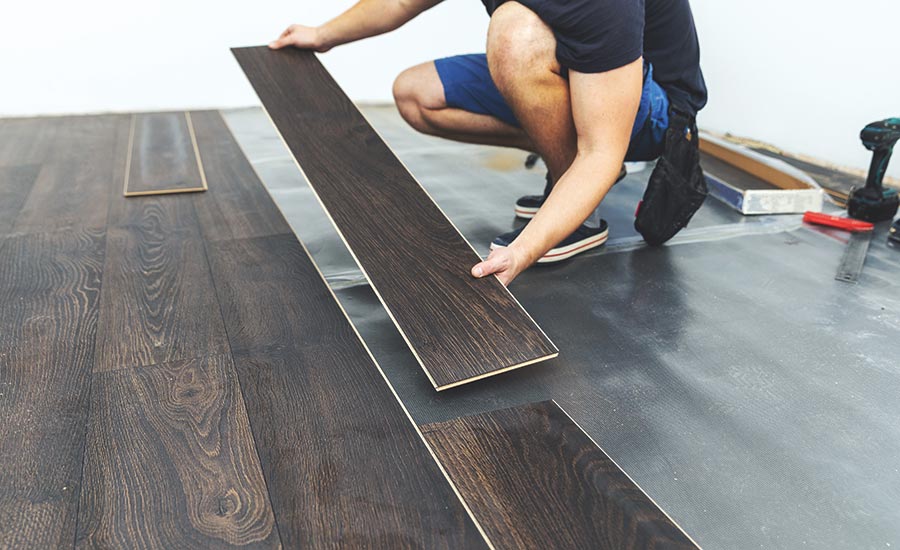
Whether you are a newbie installer or an experienced veteran in the industry, understanding flooring lingo can help you complete your job efficiently and accurately. To help you navigate, we’ve compiled a handy glossary of flooring terms specifically for installers and contractors.
A good starting point for any installer is knowing the difference between resilient and solid flooring.
- Resilient flooring is any type of material designed to be flexible and sturdy, such as vinyl or laminate.
- Solid flooring most commonly refers to hardwood.
The next set in our glossary of flooring terms to know revolves around the type of installation involved. Nail-down, floating, and glue-down are all common installation methods.
- Nail-down is when the flooring is nailed to a subfloor or existing floor.
- Floating floors are when the planks are attached to each other, but not attached to the subfloor. The planks are held in place using the tongue-and-groove method.
- Glue-down installation is the process of, as the name implies, using a strong adhesive to secure the flooring to the subfloor.
Next up, you’ll want to be familiar with the elements of a flooring board itself. The most important pieces you need to know are the tongue, groove, and core.
- The tongue of the board is a protrusion of the board on the long end, allowing the board to fit snugly onto other boards.
- The groove is the channel along the end of the board that allows the tongue to fit in.
- The core is the center of the board, usually composed of multiple layers of wood to give the board its structure and stability.
When preparing to install the flooring, there are a few extra pieces of equipment you should know.
- Underlayment is a protective material that is installed between the sub-floor and the new flooring to increase soundproofing and insulate against both cold and heat.
- Moisture barriers are also a must-know, as these are essential for preventing mold and mildew growth.
Finally, there are a few other terms that all installers should know.
- Acclimation is the process of allowing the flooring boards to rest before installation in order to adjust to a job site’s temperature and humidity levels. Doing so helps to alleviate any expansion or contraction issues that could arise due to temperature and humidity changes.
- Expansion gaps are also important as they are the small gaps left between the walls and the flooring that allow the flooring to expand and contract as needed.
We hope this glossary of flooring terms was helpful. If you have any further questions, our team of flooring specialists are here to help – Contact us here and we’ll be in touch soon!